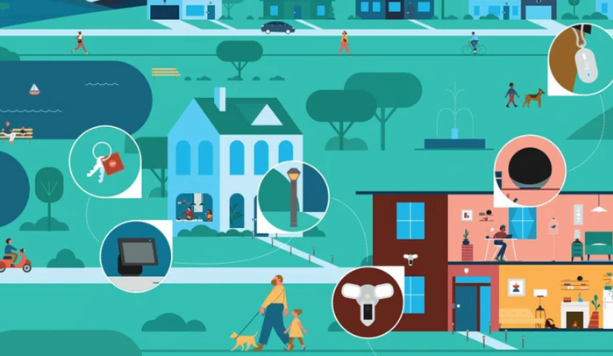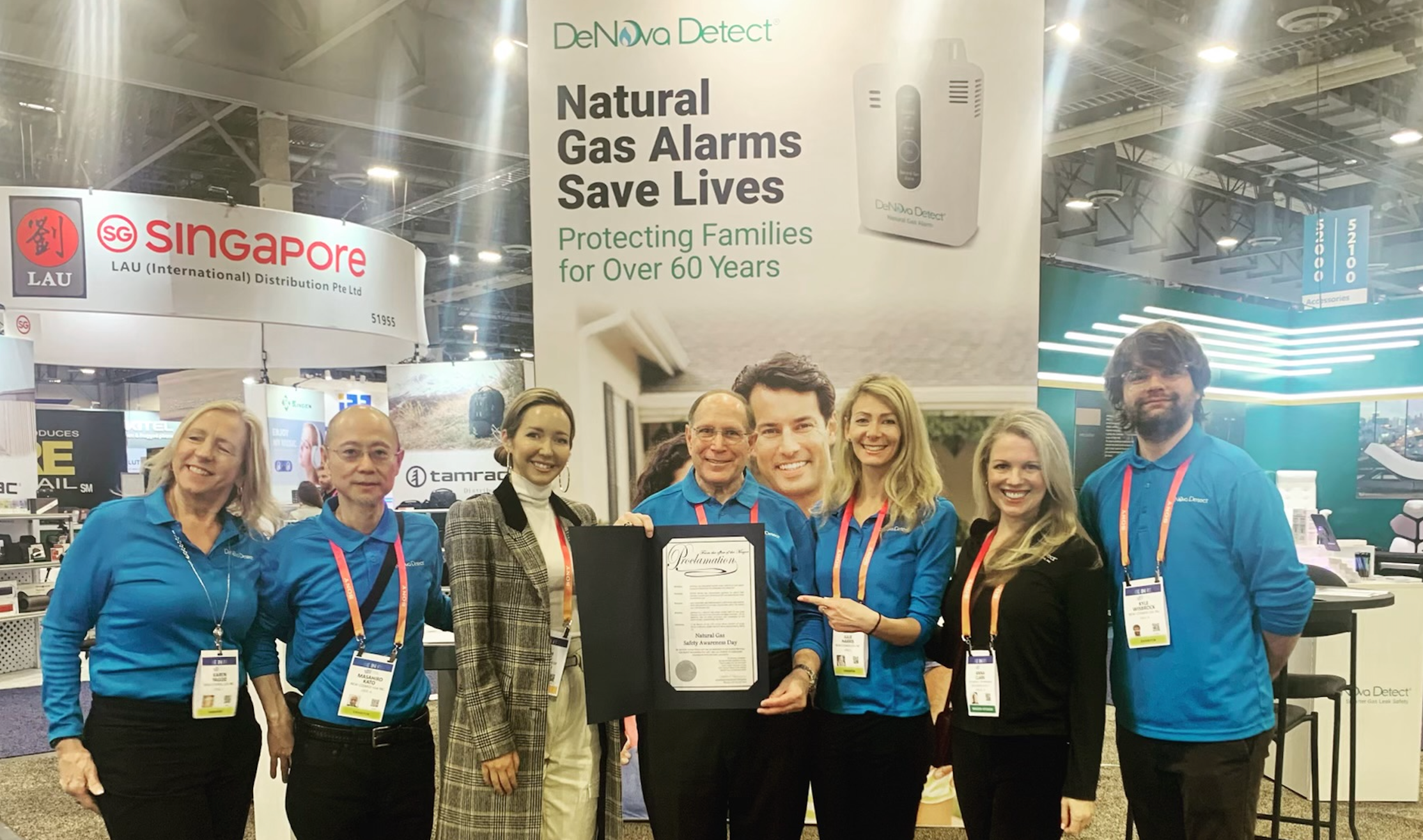At CES 2023, Amazon is showcasing Sidewalk (Fig. 1), a long-range, secure IoT network providing affordable connectivity for smart devices. Developers and device makers can access the tool and start creating projects in the first half of this year.
Amazon says Sidewalk had limited capacity access, but the network can now be expanded to make it more widely available. Developers should expect to receive access to analytics and data, as well as experience design performance improvements via updates and new iterations. The company also will provide software-development kits (SDKs) built by leading IoT chipset companies. Devices developed by New Cosmos USA, Browan, and Meshify will connect to Amazon's Sidewalk. Meanwhile, Deviceroy is already integrated with Sidewalk.
Amazon Sidewalk relies on Bluetooth and LoRa radios, providing device connectivity to the cloud. It's essentially designed to keep gadgets like outdoor smart lights and Tile trackers online whenever they're out of range from the home network. However, coverage gaps may otherwise occur in industrial areas, rural regions, or at the end of the Sidewalk.
In response, earlier this year, Amazon unveiled Bridge Pro, a device developed by Ring that aims to cover those gaps. It features radios that are needed to transmit signals to the Amazon cloud. The Sidewalk Bridge Pro sends and receives data from up to five miles away, a distance that surpasses the radios in Echo and Ring devices.
Pilot Programs
Amazon collaborated with Arizona State University and Thingy to launch pilot programs for the Amazon Bridge Pro Sidewalk (Fig. 2). While the university uses the Bridge Pro with its smart cities research, Thingy connected it with air-quality systems in wildfire-hit wilderness regions. This arms firefighters with air-pollutant, air-temperature, humidity, and geolocation data, helping them combat fires, model smoke movement, and keep people and properties safe.
"We designed Thingy AQ for very remote locations, where power efficiency and range were critical for fire ground operations, and have been using LoRa since day one," said Scott Waller, CEO and co-founder of Thingy. "Amazon Sidewalk Bridge Pro brings us the power of LoRa in a massive number of needed locations, easy integration with our existing applications in Amazon Web Services, and trusted security for the devices and applications. We are very excited to work with Amazon Sidewalk to measure air quality and wildfires with our sensors and help solve the connectivity challenges for these critical applications."
Meanwhile, Arizona State University uses Sidewalk Bridge Pro to determine how it can assist on-campus connected devices, including sunlight sensors, temperature sensors, CO2 detectors, and particle counters, to stay connected while providing data to improve smart campuses and smart cities. The university deployed Bridge Pro devices on blue light poles at the Tempe campus. These deliver "strategic positioning and the built-in internet access needed for Amazon Sidewalk Bridge Pro devices to broadcast Sidewalk over long distances."
Arizona State University extended its connectivity range for on-campus IoT devices while freeing up the Wi-Fi for remote learning, video conferencing, online research, or streaming.
"Exploring sustainable and long-term solutions plays a critical role in advancing our smart technology initiatives, both on campus and within the community," said Bobby Gray, the University Technology Office's director of Digital Transformation. "The university is unique in that it is a space that encourages new ideas and disruptive technologies to be developed, tested, and iterated upon quickly. Our goal is to deploy and test Amazon Sidewalk Bridge Pro to bring smart solutions, like those fitted to the blue light poles, to campus at scale and lower costs."
New Cosmos' DeNova Detect, its Sidewalk natural gas alarm, detects natural gas leaks in a home, keeping consumers safe. Sidewalk also allows the company to expand coverage for their gas alarms while eliminating network connectivity costs.
Browan is unveiling residential Sidewalk-enabled sensors, including door and window sensors, a water leakage detector, a CO2 detector, and a motion detector. The MerryIoT sensors use Sidewalk, which helps these devices achieve better battery life and improve customer flexibility, to send out alerts.
Deviceroy will demonstrate its smart modem called Aria. It connects solar inverters to the internet via Sidewalk, showing solar equipment performance data to owners. This allows them to coordinate real-time energy availability with efficient appliances. Meshify is demonstrating its Meshify Defender S, a Sidewalk-enabled leak and freeze detection system that notifies consumers when damage occurs. Sidewalk also decreases installation costs.
Amazon's goal is to motivate device makers. The company plans to announce that developers can access the tools and resources to build Sidewalk-enabled devices while lowering on-board Sidewalk application costs.
Source: "Amazon Expands Sidewalk Network to More Third-Party Developers"





Leave a comment
This site is protected by hCaptcha and the hCaptcha Privacy Policy and Terms of Service apply.